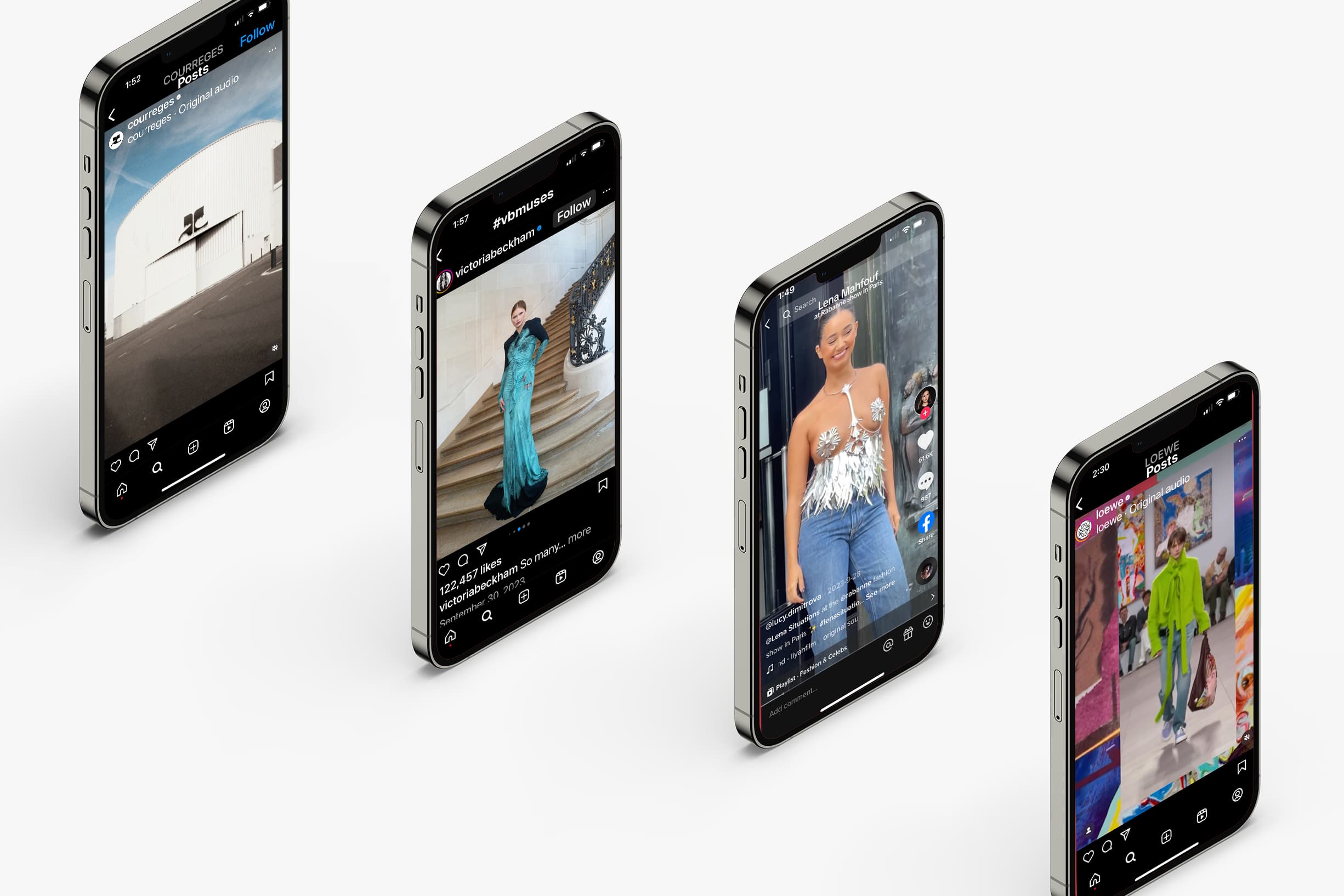Camille Olivier and Thomas Silve Offer Four Strategies for Boosting Your Runway Show’s Social Media Impact Without Breaking the Bank
By Mark Wittmer
Putting on a runway show is expensive – but posting on social media is not. It’s a simple concept, but this dichotomy is a foundational aspect of fashion communication in today’s digital-driven world. If you aren’t using social media to its fullest extent to augment the reach of the runway show you’re already investing so much in, you’re missing out on key opportunities and failing to maximize a major investment.
That’s where Ctzar comes in.
Founded in 2008 by Camille Olivier and Thomas Silve, Ctzar is a global social media agency and studio that has a deep understanding for the intersection of visual creativity, communication strategy, and digital influence. While their work extends in many directions, some of the projects we’ve been most excited by are their social media reports that decode the key strategies and digital players at each Paris Fashion Week.
Ahead of a Spring 2025 fashion season that arrives at a particularly tumultuous time for the luxury industry, we caught up with Camille and Thomas to hear four key insight on how brands need to be leveraging Instagram, TikTok, and more to drive engagement and avoid missing out on easily executable yet crucial boosts.
Index
- Leveraging the Livestream
- What a Tease!
- Recognizing TikTok’s Unique Potential
- The Show Within the Show
Leveraging the Livestream
The last few seasons have seen the Instagram livestream transform from a covid-era necessity to a fully realized communications opportunity of its own, creating new ways to leverage the existing runway assets brands are already investing in as new storytelling and content creation opportunities with only a minor additional lift.
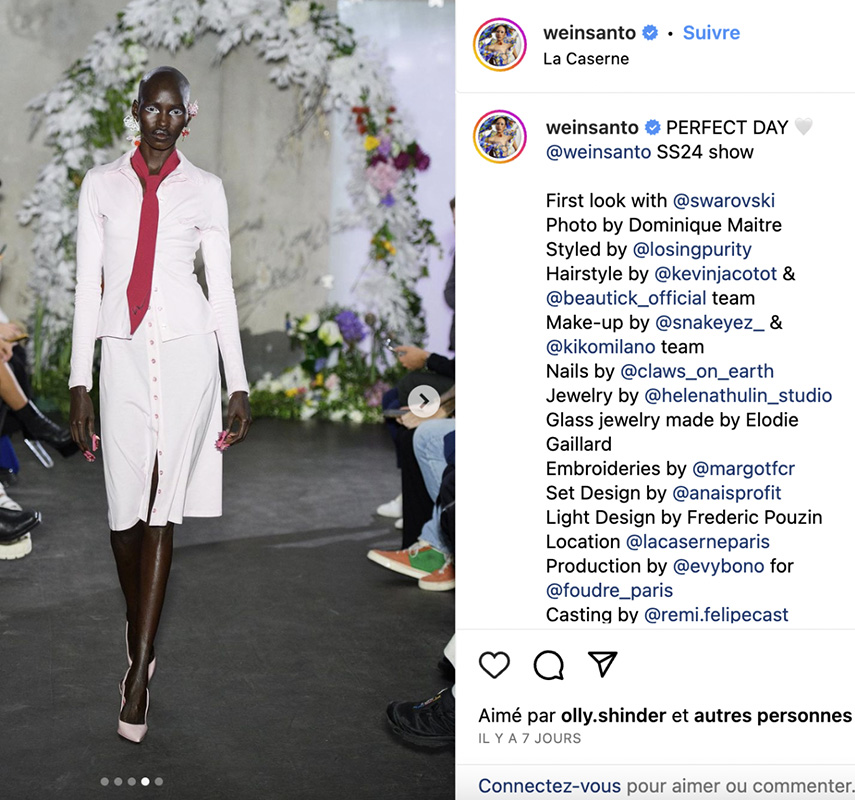
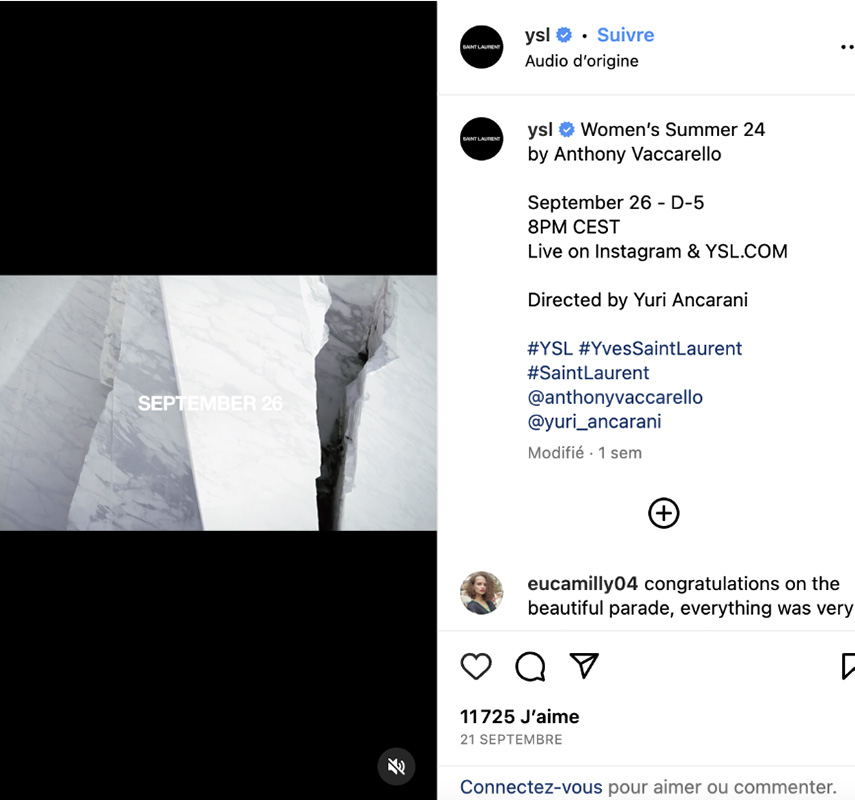
As Ctzar’s Spring 2024 analysis points out, Courrèges recognized this opportunity by broadcasting the live show on their story hours before the official start, displaying a detailed layout of the venue and its starkly stylish set design. The approach ensured the brand’s content remained in followers’ feeds and boosted its place in the algorithm even before the runway show began.
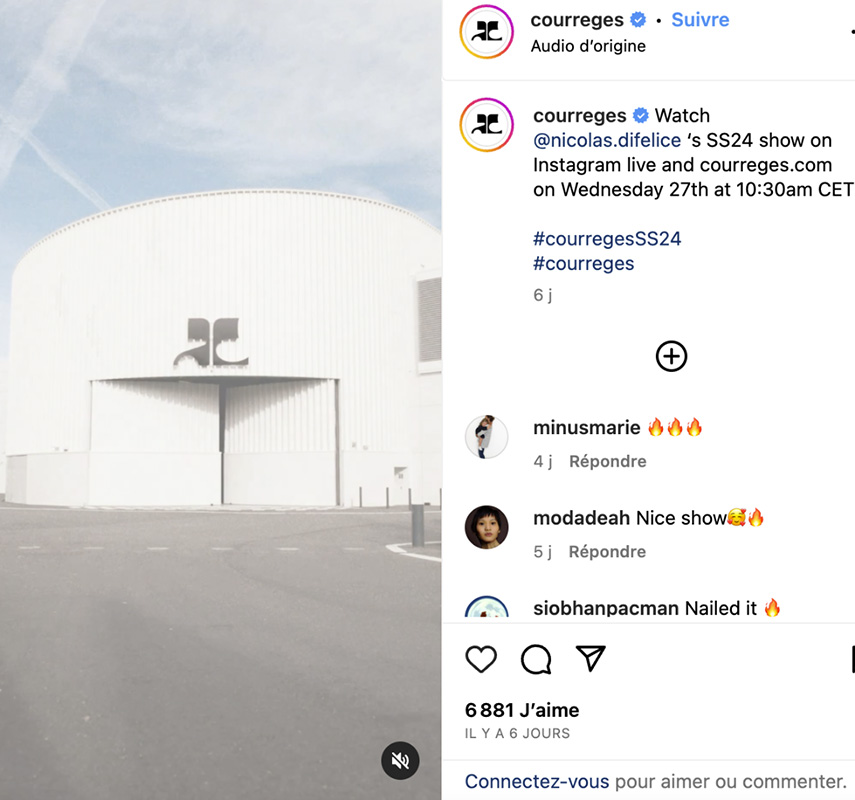
The livestream can also be a strong way to foster community, reflecting how brands are shifting from top-down to horizontally integrated models informed by conversation and collaboration. The comments in the Instagram livestream of Collina Strada’s Fall 2024 show, for example, was abuzz with fan’s reacting in real time to each look – a powerful look for a brand that is focused on inclusivity and transparency. (Just be wary that these chats can and will quickly be monopolized by a legion of rabid fans if there is a K-pop star sitting front row.)
What a Tease!
In a connected idea to the livestream, runway show teasers have also emerged as a strong strategy to extend engagement around a runway show. Ctzar identifies how Marni’s approach to the pre-show teaser evoked suspense and artistry as it wove “a narrative of exploration and discovery, culminating in a symbolic connection with Paris and Karl Lagerfeld’s apartment, the location of the runway show.” In addition to pushing the brand’s distinctive art-school vibe, the teaser kept fans tuned in as they awaited for the big reveal, which connected with the narrative of the ensuing show and collection.
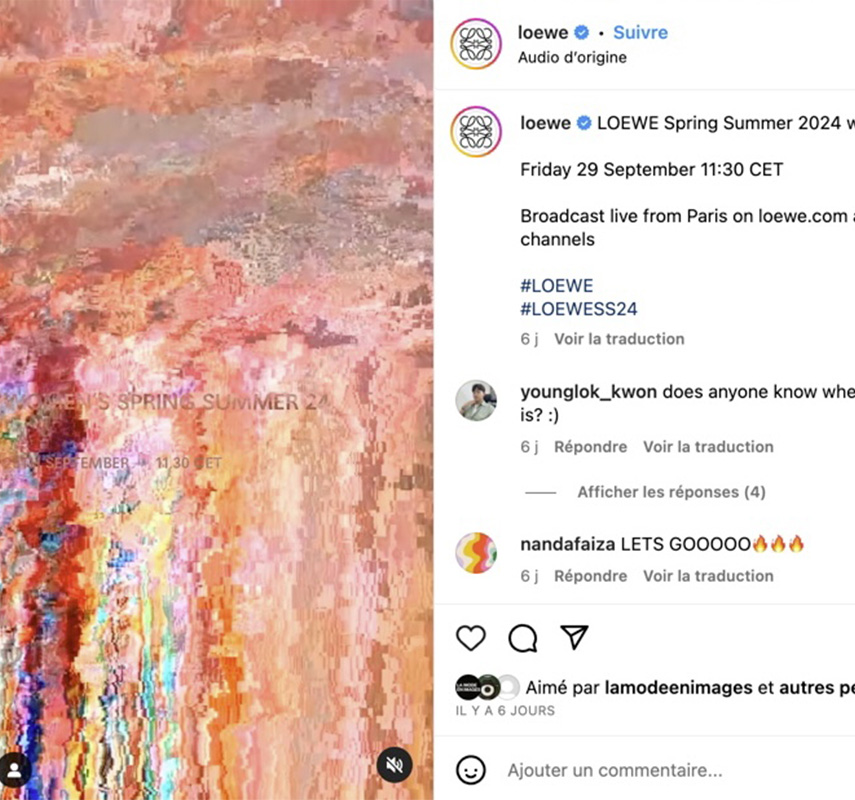
Loewe, meanwhile, wisely leverages desirability and exclusivity in its runway teasers. Through brief videos and imagery executed with its signature idiosyncratically artisanal aesthetic, it highlights the covetable pieces that become the icons of its collections. Ctzar points out the effectiveness with which the brand also “strategically leveraged talents and KOLs on TikTok, emphasizing that the attendees and their discussions about the show are equally significant as the show itself.”
Recognizing TikTok’s Unique Potential
While TikTok shares some similarities with Instagram in terms of being highly visual and conversational and provides an opportunity to create effective show teaser content, it requires a distinct voice and intentional use of the features that set it apart from traditional social media. While many luxury brands – famous as they are for guarding their prestige – were first wary of its raw, user-forward feel, they have come to embrace these elements while leveraging them in service of their identities. Rabanne, for instance, “embraces TikTok’s native elements by sharing exclusive content such as behind-the-scenes videos and guest appearances that are ‘TikTok-friendly.’”
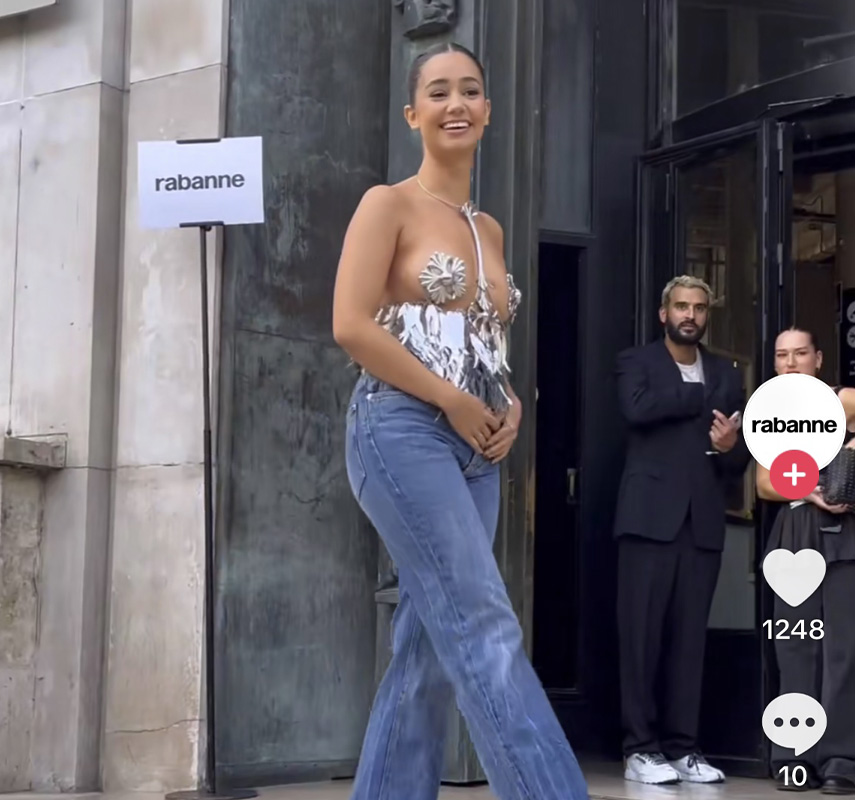
Léna Situations at the Rabanne Spring 2024 Fashion Show
“Another brand that caught my attention during last Fall’s Paris Fashion Week is Weinsanto,” Camille shares. “They’ve been exceptional in their social media communication, not just showcasing their creations but also highlighting positive feedback from the fashion community. By thoughtfully reposting content creators and opinion leaders’ comments, Weisanto reinforced its credibility and deepened its connection with the audience, serving as a powerful endorsement.”
Some brands, however, are still not on TikTok or merely use the platform to repost the more refined content that it primarily shares on Instagram, YouTube, and print. Though it never hurts to get more eyes on a good looking ad campaign, this approach doesn’t fully harness the platform’s potential to drive organic engagement and connect with new audiences in a fresh, relatable way.
Offering advice to brands that may still be hesitant about incorporating TikTok into their communications strategy, Camille points out that “a great starting point is partnering with content creators who reflect your brand’s values and style. These creators bring invaluable insights into TikTok’s culture, helping you navigate its nuances and adapt them to your brand. This collaboration extends your reach and fosters a sense of community. Even if you’re just starting out, working with creators can significantly boost your visibility and allow you to make a meaningful entrance onto the platform without needing an established account or following.”
The Show Within the Show
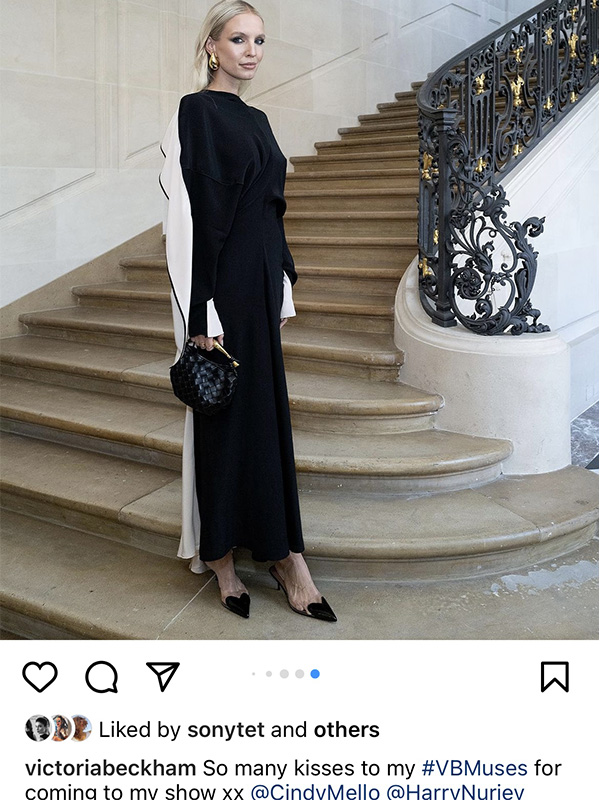
The internal vocabulary and priority shift of the fashion industry from “influencers” to “Key Opinion Leaders” isn’t merely a superficial change. From shaping street style (through both brand partnerships and their own style voices) to making a grand entrance and even appearing on the runway, these figures are not just an accessory to fashion week, but a highlight, shaping narrative and communication in a majorly impactful way.
Ctzar identifies Victoria Beckham as a leading player on this front. The designer shared curated photos of attending KOLs, seamlessly incorporating them into her feed with a dedicated hashtag, #VBMuses.
“These creators have loyal communities that trust their opinions,” Camille expands. “It’s important to guide them in understanding the brand’s DNA while giving them the creative freedom to produce authentic content. Over-controlling this process can backfire, reducing effectiveness. Partnering with TikTok creators, for example, can significantly boost visibility and engagement, as these creators know what resonates on the platform and have a built-in trust with their followers. This in turn, can translate into trust for your brand.”
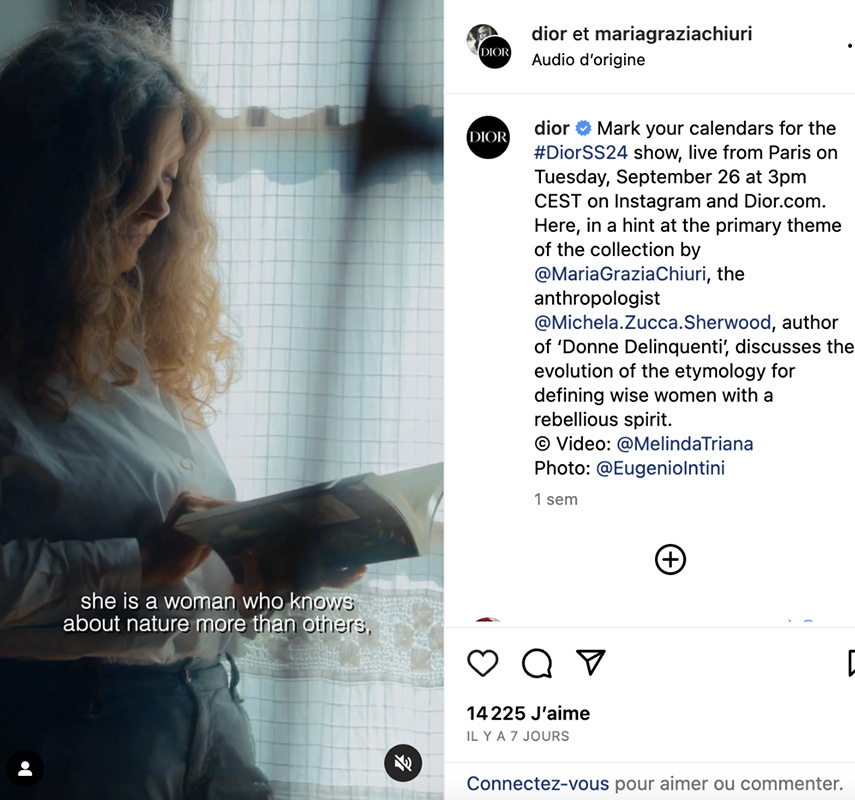
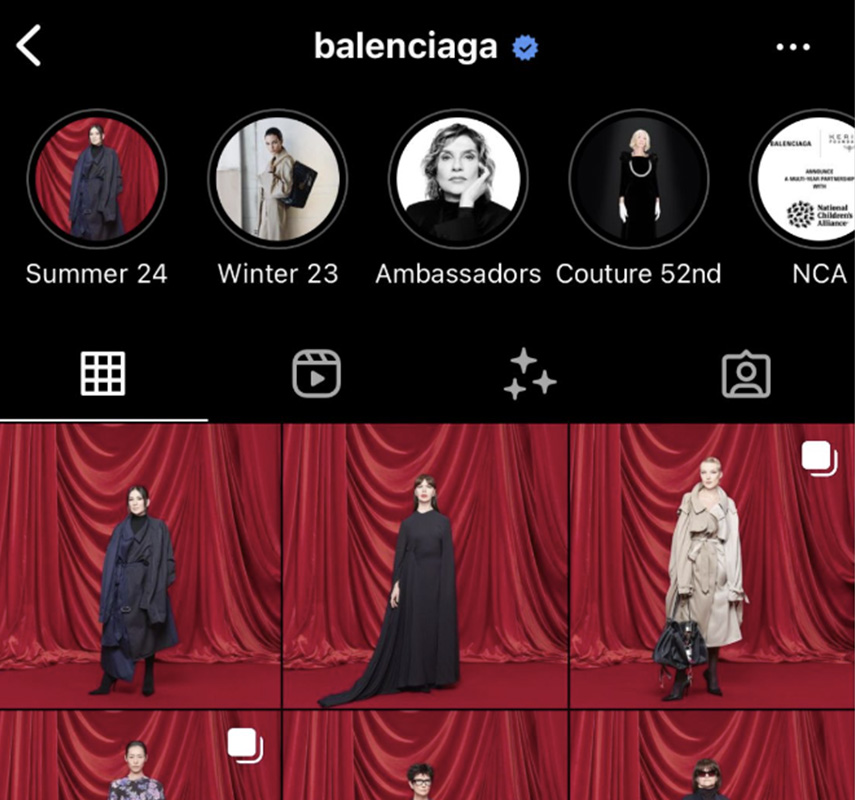
An important foundational perspective underpins each of these four strategies: recognizing that social media has a distinct language of its own, and understanding that all elements of a runway show – from the looks themselves, to the front row, to the after party – can be translated into this language. As Camille explains,
When it comes to a successful social media strategy for luxury fashion runway shows, the first thing I look for is content that’s “social by design.” This means the content is crafted specifically for social media from the very beginning, ensuring it aligns with the norms and language of the chosen platform.”
